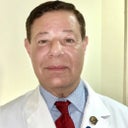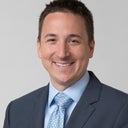Posted underDermaplaning q&a
Can an expert explain more about the treatment called dermaplane?
Can an expert explain more about the treatment called dermaplane?
Answers (12)
From board-certified doctors and trusted medical professionals
Dr. Nelson Lee Novick, MD

Dr. Nelson Lee Novick, MD
Dermatologic Surgeon, Board Certified in Dermatology
Answer
Dr. Alan N. Larsen, MD

Dr. Alan N. Larsen, MD
Board Certified Plastic Surgeon
Answer
Dr. Brian M. Harmych, MD, FACS

Dr. Brian M. Harmych, MD, FACS
Board Certified Facial Plastic Surgeon
Answer
Dr. Armando Soto, MD, FACS

Dr. Armando Soto, MD, FACS
Board Certified Plastic Surgeon
Answer
Dr. William J. Hedden, MD

Dr. William J. Hedden, MD
Board Certified Plastic Surgeon
Answer
Dr. Otto Joseph Placik, MD

Dr. Otto Joseph Placik, MD
Board Certified Plastic Surgeon
Answer
Dr. Gary Motykie, MD
Dr. Gary Motykie, MD
Board Certified Plastic Surgeon
Answer
More Dermaplaning Questions
See all Dermaplaning Q&AWE SEND PRETTY
EMAILS
What’s trending? Who’s turning heads? Which TikTok myths need busting? We’ve got you. No fluff, no gatekeeping—just real talk. Get our free, unfiltered newsletter.
